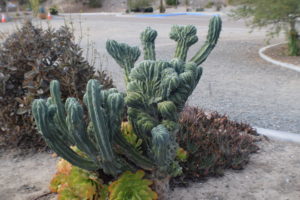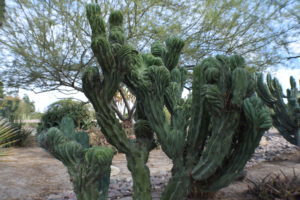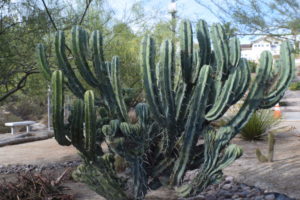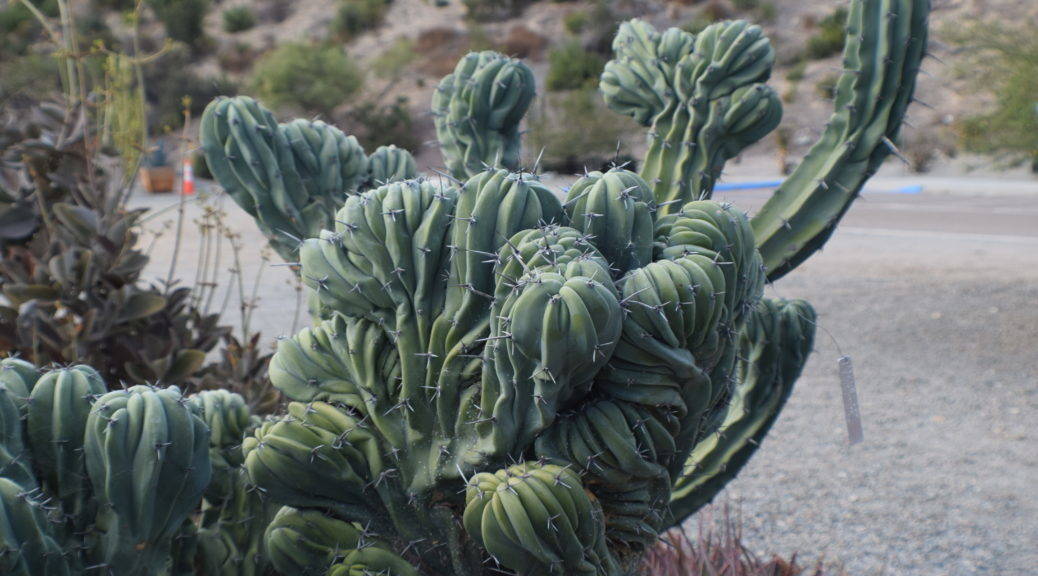This nursery-produced cactus has bizarre and interesting blue-gray waxy stems
which forms a tree-like trunk and has a tendency to fan out, clustering over one another; some stems will form stable crests while others just cluster over one another. Occasionally when new branches form out from a crest, they may revert to the normal growth pattern, giving rise to a more bizarre appearance.

The crests are frequently grafted onto a normal a Myrtillocactus trunk but are easily grown on their own roots.
The Dinosaur Back Cactus tolerates exposure to full sun and moderate watering. Myrtillocactus doesn’t like to be exposed to temperatures below 28°F and never let the night-time temperature fall below 50°F. Water regularly during the summer months and allow soil to dry fully before watering again. Myrtillocactus needs well-drained soil mix, with small gravel added to ensure drainage. During the winter months plants should be rather kept dry, and water is restricted to only enough to keep the stems and branches from shriveling. Since they are big-sized plants need plenty of space for their roots, repotting should be done every other year, or when the plant has outgrown its pot. Exposure: Light shade when young, full sun later.

There are several crested clones of Myrtillocactus geometrizans that have a tendency to fan out, some will form stable crests while others will cluster over one another, regardless, both types make for a spectacular landscape attraction.


